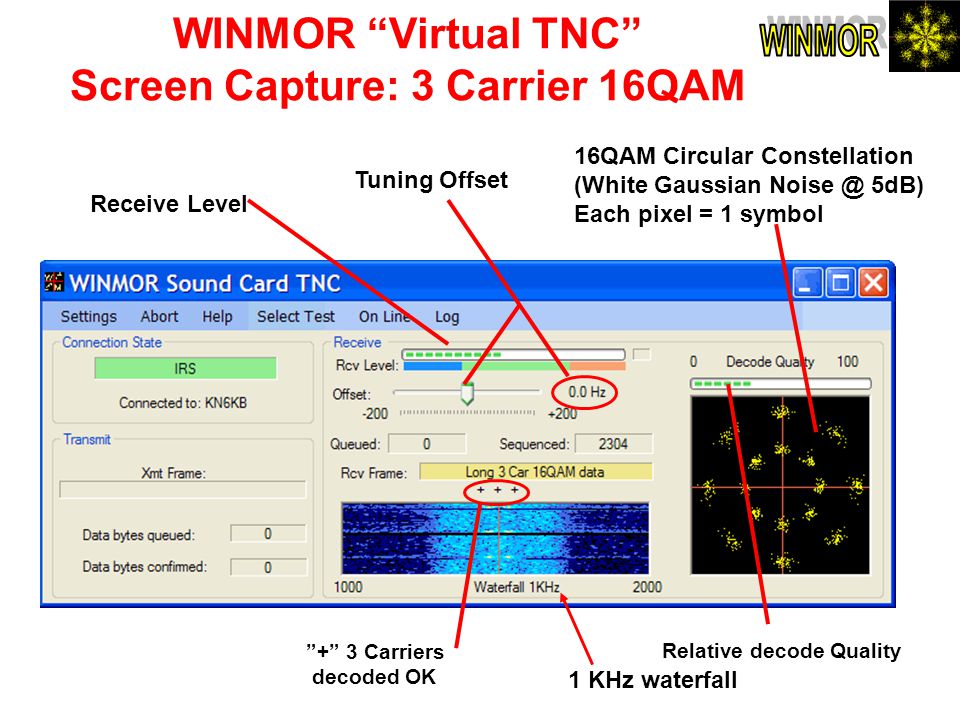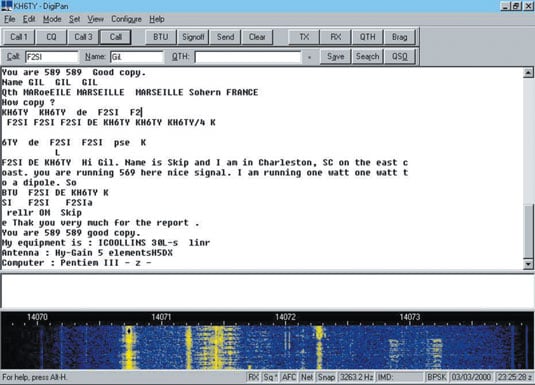- Winlink, or formally, Winlink Global Radio Email (registered US Service Mark), also known as the Winlink 2000 Network, is a worldwide radio messaging system that uses amateur-band radio frequencies and government frequencies to provide radio interconnection services that include email with attachments, position reporting, weather bulletins, emergency and relief communications, and message relay.
- 6-Pack Winmor Solar Wall Deck Lights Outdoor w/2 Modes for $19.39 Eufy Security Wired 2K Video Doorbell E82021F2 for $119.99 96-Pk Acoustic Wedge Studio Soundproofing Foam Wall Tiles for $57.99.
This includes traditional modes such as RTTY, SSTV and CW (to name a few), as well as today's hottest new modes like FT8, PSK31, JT65, WSPR, WINMOR, VARA FM 1200 and EchoLink. Performance on all modes has been optimized by the use of special low-noise parts and careful design techniques, while ease of operation is provided by front panel. Welcome to the GSARA The Garden State Amateur Radio Association, Inc. (GSARA) is a ham radio club dedicated to advance the art, science and enjoyment of amateur radio. We have a very diverse group with varied interests. Some of us are interested in operating, some like different modes of communicating.
Winlink, or formally, Winlink Global Radio Email (registered US Service Mark), also known as the Winlink 2000 Network, is a worldwide radio messaging system that uses amateur-band radio frequencies and government frequencies to provide radio interconnection services that include email with attachments, position reporting, weather bulletins, emergency and relief communications, and message relay. The system is built and administered by volunteers and is financially supported by the Amateur Radio Safety Foundation.[a]

Network[edit]
Winlink networking started by providing interconnection services for amateur radio (also known as ham radio). It is well known for its central role in emergency and contingency communications worldwide. The system used to employ multiple central message servers around the world for redundancy, but in 2017–2018 upgraded to Amazon Web Services that provides a geographically-redundant cluster of virtual servers with dynamic load balancers and global content-distribution. Gateway stations have operated on sub-bands of HF[b] since 2013 as the Winlink Hybrid Network, offering message forwarding and delivery through a mesh-like smart network whenever Internet connections are damaged or inoperable.[2] During the late 1990s and late 2000s, it increasingly became what is now the standard network system for amateur radio email worldwide. Additionally, in response to the need for better disaster response communications in the mid to later part of the 2000s, the network was expanded to provide separate parallel radio email networking systems for MARS, UK Cadet, Austrian Red Cross, the US Department of Homeland Security SHARES HF Program, and other groups.
Amateur radio HF e-mail[edit]
Generally, e-mail communications over amateur radio in the 21st century is now considered normal and commonplace.[citation needed] E-mail via high frequency[b] (HF) can be used nearly everywhere on the planet, and is made possible by connecting an HF single sideband (SSB) transceiver system to a computer, modem interface, and appropriate software. The HF modem technologies include PACTOR, Winmor, and Automatic Link Establishment (ALE).
Amateur radio HF e-mail guidelines[edit]
Amateur radio users in each country follow the appropriate regulatory guidelines for their license. Some countries may limit or regulate types of amateur messaging (such as e-mail) by content, origination location, end destination, or license class of the operator. Origination of third party messages (messages sent on behalf of, or sent to, an end destination who is not an amateur operator) may also be regulated in some countries; those that limit such third party messages normally have exceptions for emergency communications. In accordance with long standing amateur radio tradition, international guidelines and FCC rules section 97.113, hams using the Winlink system are advised that it is not appropriate to use it for business communications.
Users[edit]
The Winlink system is open to properly licensed amateur radio operators. The system primarily serves radio users without normal access to the internet, government and non-government public service organizations, medical and humanitarian non-profits, and emergency communications organizations. Duly authorized MARS operators may utilize the MARS part of the system. As of July 2008, there were approximately 12,000 radio users and approximately 100,000 internet correspondents. Monthly traffic volume averages over 100,000 messages.[3]
For offshore cruising yachtspeople Winlink is widely used as an alternative, or alongside, Sailmail, which is an HF PACTOR based email system using marine HF frequencies rather than amateur. As well as email the service uses a system called Saildocs, which allows cruisers to retrieve metrological, maritime safety and other crucial files over email.
Supported radio technologies[edit]
- 802.11 'WiFi'
- ALE (Automatic Link Establishment)
- APRS (Automatic Packet Reporting System)
- TCP/IP (Telnet and other Wireless Technologies)
Technical protocols[edit]

PACTOR-I, WINMOR, ARDOP, HSMM (WiFi), AX.25 packet, D-Star, TCP/IP, and ALE are non-proprietary protocols used in various RF applications to access the Winlink network systems. Later versions of PACTOR are proprietary and supported only by commercially available modems from Special Communications Systems GmbH. In amateur radio service, AirMail, Winlink Express, and other email client programs used by the Winlink system,[4] disable the proprietary compression technology for PACTOR-II, PACTOR-III, and PACTOR-IV modems and instead relies on the open FBB protocol, also widely used worldwide by packet radioBBS forwarding systems.
Controversies and US regulatory issues[edit]
In May 1995, the American Radio Relay League (ARRL) privately asked the FCC to change Part 97.309(a) to allow fully documented G-TOR, Clover, and original open source PacTOR (Pactor I) modes. The FCC granted this request in DA-95-2106 based on the ARRL's representation that it had worked with developers to ensure complete technical documentation of these codes were available to all amateur radio operators.[5] However, subsequent versions of Pactor contained proprietary compression algorithms that prevent over-the-air interception.[6]
In 2007, a US amateur radio operator filed a formal petition with the Federal Communications Commission (FCC)[7] aimed at reducing the signal bandwidth in automatic operation subbands; but, in May 2008 FCC ruled against the petition.[8] In the Official Order, FCC said, 'Additionally, we believe that amending the amateur service rules to limit the ability of amateur stations to experiment with various communications technologies or otherwise impeding their ability to advance the radio art would be inconsistent with the definition and purpose of the amateur service.[8] Moreover, we do not believe that changing the rules to prohibit a communications technology currently in use is in the public interest.'[8]
In 2013, the FCC ruled in Report and Order 13-1918 against the use of encryption in the US amateur radio bands for any purpose, including emergency communications. The FCC cited the need for all amateur radio communications to be open and unobscured, to uphold the Commission's long-standing requirement that the service be able to self-police itself.[9]
Winmorse

In spite of FCC rulings DA 95-2106 and DA 13-1918, Winlink advocates continue to use the proprietary versions of Pactor and other undocumented data formats that cannot be eavesdropped, and continue to press the FCC for encrypted data transmissions in amateur radio, as exemplified in a Winlink petition to the FCC for legalized encryption of the US amateur spectrum while seeking broader spectrum allocations in response to the Puerto Rico hurricanes of 2017.[10]
Opponents warn that the continual lack of enforcement by the FCC and continued allowance of 'effectively encrypted' e-mail traffic in the amateur bands is a national security threat, and ham operators have written to the US Congress about the threat.[11][12][13][14][15]
Winmore Polypropylene Wrapping Twine
The Board of Directors of the Amateur Radio Safety Foundation, Inc. has written FCC Chairman Ajit Pai, other Federal Communications Commission members, and FCC administrators to correct inaccuracies in opponents' claims.[16]
See also[edit]
Footnotes[edit]
- ^Amateur Radio Safety Foundation Inc., is an American public-benefit entity and 501(c)(3) non-profit organization.[1]
- ^ abHigh frequency (HF) is the band of radio frequencies from 3–30 megaHertz, or equivalently wavelengths from 100–10 meters. It is approximately the same as the wider shortwave band.
References[edit]
- ^'ARSFI'. Amateur Radio Safety Foundation, Inc.
- ^'Navy MARS homepage'(PDF). Navy Military Affiliate Radio System (Navy MARS). Retrieved 4 April 2018.
- ^'Winlink System Traffic'. Winlink.org.
- ^'Client software'. Winlink.org.
- ^'FCC Order DA 95-2106'(PDF).
- ^'Public Comment by W4RUS'.
- ^'FCC Petition RM-11392'(PDF). US Government Federal Communications Commission FCC.
- ^ abc'DA-08-1082A1'(DOC). US Government Federal Communications Commission FCC.
- ^'DA 13-1918'(PDF). US Government Federal Communications Commission (FCC).
- ^'Public Comments in PSHSB 17-344 by Steve Waterman'(PDF). US Government Federal Communications Commission (FCC).
- ^'Rappaport suggests national security risks with amateur radio violations'. RR Media Group. 21 Nov 2018.
- ^'Ex-parte comments of W. Lee McVey, P.E., to FCC's Scot Stone'(PDF). 12 Nov 2018.
- ^'Ex-parte comments of W. Lee McVey, P.E., to FCC's Scot Stone, WTB'(PDF). 17 Dec 2018.
- ^'Ex-parte statement by Ron Kolarik'(PDF). 31 Dec 2018.
- ^'Ex-parte comments of Janis Carlson to FCC Commissioners'(PDF). 5 Dec 2018.
- ^'Notice of ex-parte'. 120566997404.
- Josuweit, Robert (January 2006). 'Hams to The Rescue!'. Conformity. Retrieved 24 March 2008.
- Arland, Rich (February 2006). 'It's more than Ham Radio Volunteers!'. Popular Communications.
- 'A Failure of Initiative: The Final Report of the Select Bipartisan Committee to Investigate the Preparation for and Response to Hurricane Katrina'. February 2006. Retrieved 24 March 2008.
- Josuweit, Robert (May 2006). 'High Level Recognition for Hams'. CQ Amateur Radio.
- 'FCC Petition RM-11392'(PDF). US Government Federal Communications Commission FCC.
- 'DA-08-1082A1'(DOC). US Government Federal Communications Commission FCC.
- 'Winlink System Traffic'. Winlink.
- Josuweit, Robert (March 2005). 'Tsumnami!'. CQ Amateur Radio.
- Linden, Lou (December 2004). 'Winlink 2000 in the Jungle'. QST.
